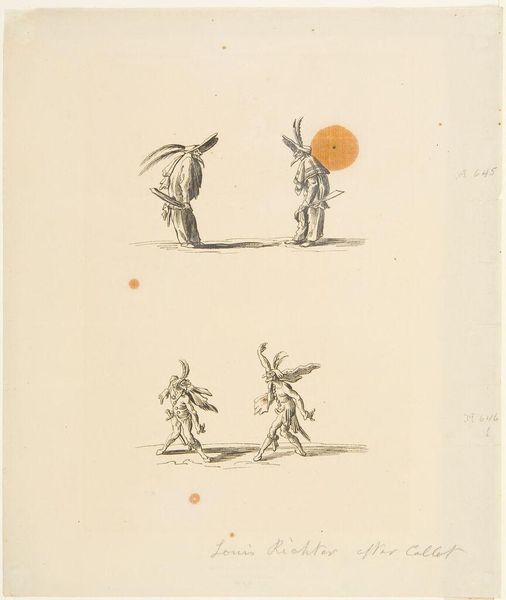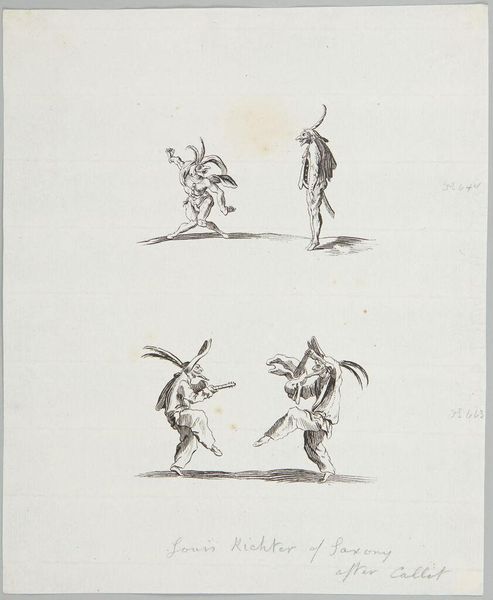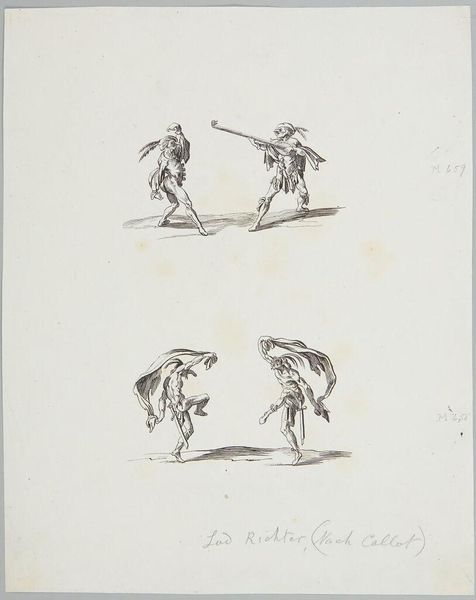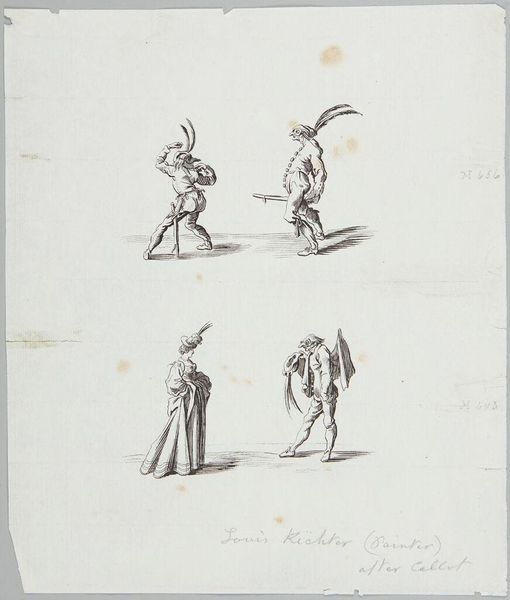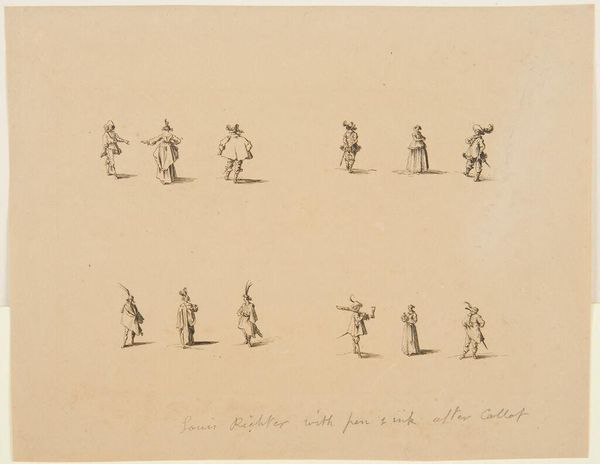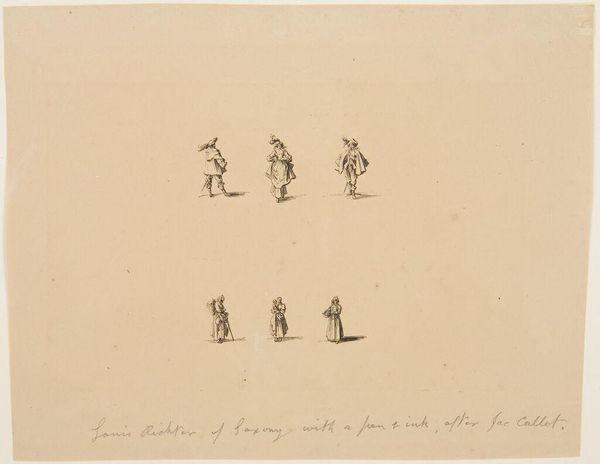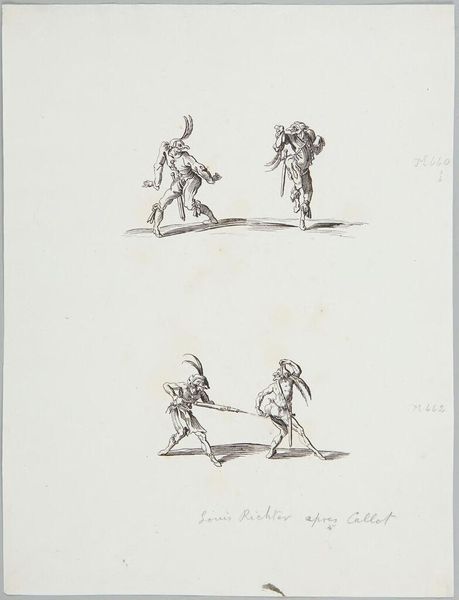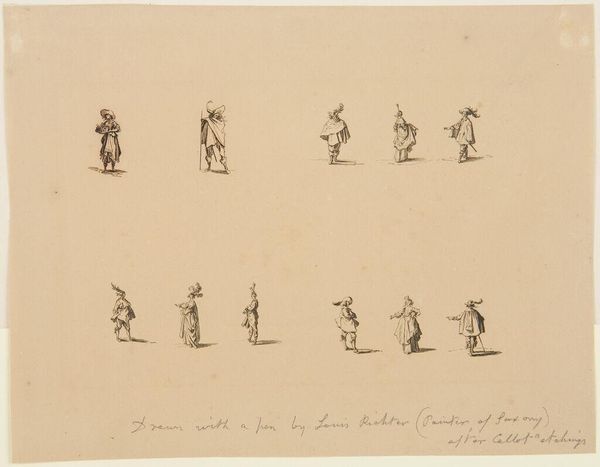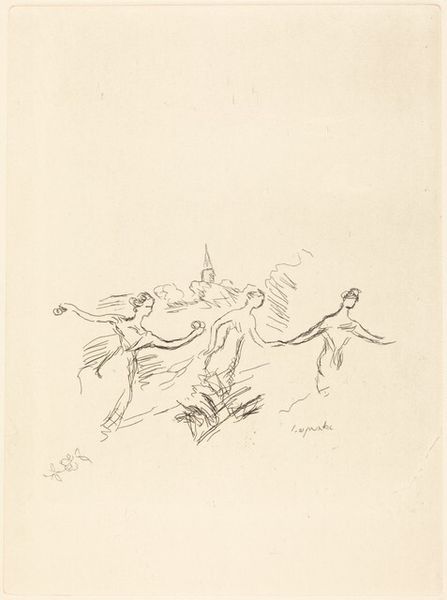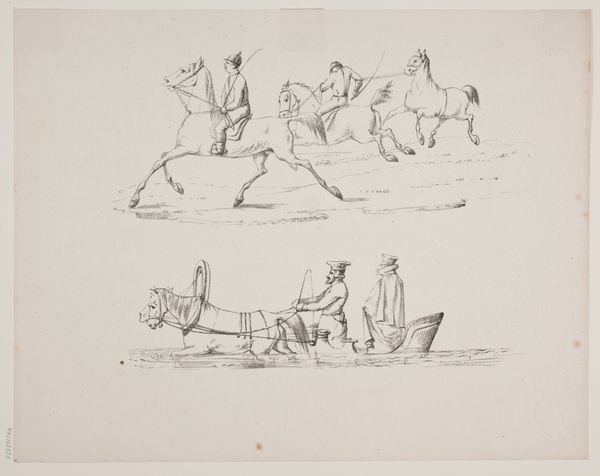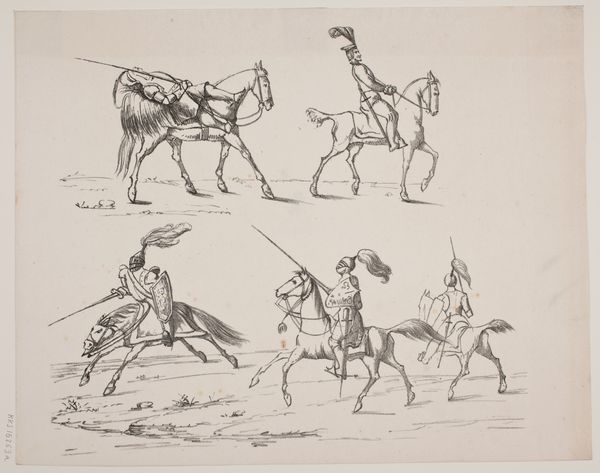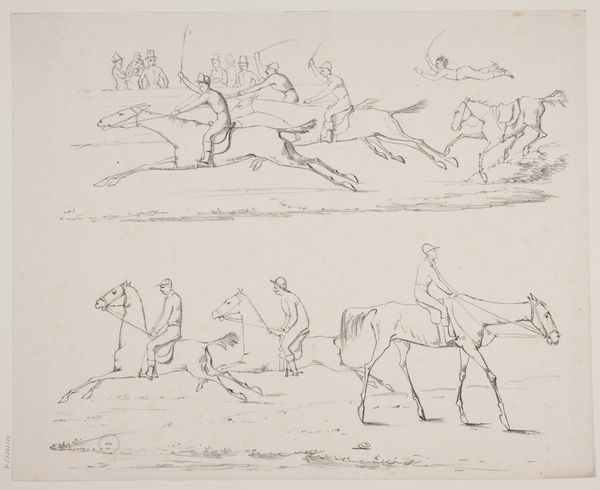
Taglia Cantoni and Fracasso, and Gian Fritello and Ciurlo, after Callot c. 19th century
0:00
0:00
Copyright: CC0 1.0
Editor: This is Adrian Ludwig Richter’s "Taglia Cantoni and Fracasso, and Gian Fritello and Ciurlo, after Callot". It appears to be a pen drawing. I notice the figures are masked, and the mood seems theatrical. What resonates with you when you look at it? Curator: The masks immediately bring to mind commedia dell'arte, evoking stock characters and archetypes deeply rooted in European cultural memory. The sword fight suggests conflict, but do you notice the sun-like shape above the dueling figures? Editor: Yes, it almost feels like a stage light. What could that symbolize? Curator: It might represent enlightenment, or perhaps divine judgment. The figures below, though smaller, also seem to be in conflict. Consider how Richter uses these repeating figures. Does that enhance or diminish the sense of drama? Editor: It creates a pattern, almost like a dance of violence. I see how the symbolism adds layers to a simple scene. Curator: Exactly! Richter invites us to delve into the performance of power, conflict, and perhaps even absurdity, through the symbolic language of form and figures.
Comments
No comments
Be the first to comment and join the conversation on the ultimate creative platform.
